Depletion of conventional CD4+ T cells is required for robust priming and dissemination of tumor antigen-specific CD8+ T cells in the setting of anti-CD4 therapy
- PMID: 39521617
- PMCID: PMC11552015
- DOI: 10.1136/jitc-2024-010170
Depletion of conventional CD4+ T cells is required for robust priming and dissemination of tumor antigen-specific CD8+ T cells in the setting of anti-CD4 therapy
Abstract
Background: Overcoming immune suppression is a major barrier to eliciting potent CD8+ T cell responses against cancer. Treatment with anti-CD4 monoclonal antibody is an effective means for eliminating CD4+Foxp3+ regulatory (Treg) cells in preclinical models and has also demonstrated efficacy in early clinical trials. However, the underlying basis for treatment efficacy, more specifically the implications of codepleting other CD4-expressing cell compartments in tumor-bearing hosts, is not well understood.
Methods: Tumor-bearing mice were treated with anti-CD4 versus other therapies that preserve helper T cell function, and the priming, tissue distribution, and maintenance of tumor antigen-specific CD8 T cells were assessed. Antibody blockade and transgenic mouse models were used to determine the mechanisms of CD8 T cell priming. Single-cell RNA-sequencing (scRNAseq) was used to further characterize CD8 T cells that are primed by anti-CD4 therapy and to identify immunosuppressive CD4 T cell subsets in human melanoma following immune checkpoint blockade (ICB).
Results: Comparing anti-CD4 to dual ICB therapy, we show that anti-CD4 facilitates more robust priming of TCF-1+, IL-2-producing, tumor-specific CD8+ T cells that disseminate to tissues and form memory. By decoupling priming from homeostatic proliferation and associated cytokines, we find that anti-CD4 functions independently of creating homeostatic space for CD8+ T cells. We also show that depletion of CD4-expressing antigen-presenting cell subsets is not required for anti-CD4 efficacy. Instead, robust tumor-specific CD8+ T cell priming and memory generation required the removal of total antigen-specific CD4+ T cells, including both Tregs and CD4+ Foxp3-negative conventional (Tconv) cells. In particular, the elimination of CD4+ Tconv cells was necessary for the accumulation and maturation of conventional type-1 dendritic cells in tumor-draining LNs, which were required for CD8+ T cell priming. Accordingly, anti-CD4 treatment restored CD8+ T cell responses in mice cotreated with dual ICB. scRNAseq of melanoma tumors from patients who received ICB revealed the presence of Tr1 and Treg subsets, as well as CD4+ Tconv subsets that lacked clear transcriptional evidence of helper differentiation.
Conclusions: These findings underscore the underappreciated benefit of depleting CD4+ Tconv cells to promote systemic primary and memory CD8+ T cell responses against cancer.
Keywords: Immunosuppression; Immunotherapy; Memory; Monoclonal antibody; T cell.
© Author(s) (or their employer(s)) 2024. Re-use permitted under CC BY-NC. No commercial re-use. See rights and permissions. Published by BMJ.
Conflict of interest statement
Competing interests: None declared.
Figures
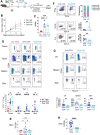
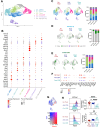
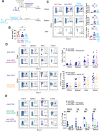
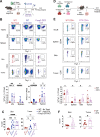

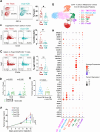
Similar articles
-
Systemic pharmacological treatments for chronic plaque psoriasis: a network meta-analysis.Cochrane Database Syst Rev. 2021 Apr 19;4(4):CD011535. doi: 10.1002/14651858.CD011535.pub4. Cochrane Database Syst Rev. 2021. Update in: Cochrane Database Syst Rev. 2022 May 23;5:CD011535. doi: 10.1002/14651858.CD011535.pub5. PMID: 33871055 Free PMC article. Updated.
-
ANV600 is a novel PD-1 targeted IL-2Rβγ agonist that selectively expands tumor antigen-specific T cells and potentiates PD-1 checkpoint inhibitor therapy.J Immunother Cancer. 2025 Jul 15;13(7):e011905. doi: 10.1136/jitc-2025-011905. J Immunother Cancer. 2025. PMID: 40664449 Free PMC article.
-
Systemic pharmacological treatments for chronic plaque psoriasis: a network meta-analysis.Cochrane Database Syst Rev. 2017 Dec 22;12(12):CD011535. doi: 10.1002/14651858.CD011535.pub2. Cochrane Database Syst Rev. 2017. Update in: Cochrane Database Syst Rev. 2020 Jan 9;1:CD011535. doi: 10.1002/14651858.CD011535.pub3. PMID: 29271481 Free PMC article. Updated.
-
Oncolytic immunovirotherapy: finding the tumor antigen needle in the antiviral haystack.Immunotherapy. 2025 Jun;17(8):585-594. doi: 10.1080/1750743X.2025.2513853. Epub 2025 Jun 6. Immunotherapy. 2025. PMID: 40474818 Review.
-
Comprehensive single-cell chromatin and transcriptomic profiling of peripheral immune cells in nonsegmental vitiligo.Br J Dermatol. 2025 Jun 20;193(1):115-124. doi: 10.1093/bjd/ljaf041. Br J Dermatol. 2025. PMID: 39888372
Cited by
-
Transcriptomic signatures in peripheral CD4+T-lymphocytes may reflect melanoma staging and immunotherapy responsiveness prior to ICI initiation.Front Immunol. 2025 Mar 28;16:1529707. doi: 10.3389/fimmu.2025.1529707. eCollection 2025. Front Immunol. 2025. PMID: 40226614 Free PMC article.
-
PET-based immunomapping of intratumoral CD4+ cells to monitor acquired resistance to checkpoint inhibitors.Sci Adv. 2025 Jun 27;11(26):eadw1924. doi: 10.1126/sciadv.adw1924. Epub 2025 Jun 25. Sci Adv. 2025. PMID: 40561008 Free PMC article.
-
CD4 T cell depletion increases memory differentiation of endogenous and CAR T cells and enhances the efficacy of Super2 and IL-33-armored CAR T cells against solid tumors.J Immunother Cancer. 2025 Feb 11;13(2):e009994. doi: 10.1136/jitc-2024-009994. J Immunother Cancer. 2025. PMID: 39933839 Free PMC article.
References
MeSH terms
Substances
Grants and funding
LinkOut - more resources
Full Text Sources
Molecular Biology Databases
Research Materials
